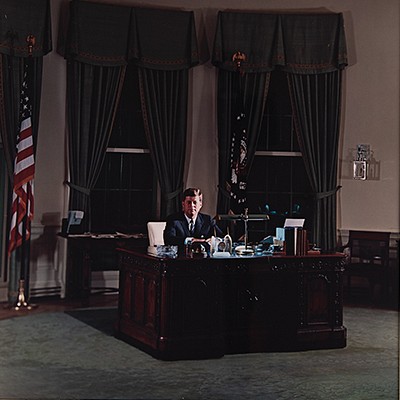President Woodrow Wilson Avoids a National Railroad Strike, Establishes an 8-Hour Workday (1916)
Two ways to bid:
- Leave a max absentee bid and the platform will bid on your behalf up to your maximum bid during the live auction.
- Bid live during the auction and your bids will be submitted real-time to the auctioneer.
Bid Increments
| Price | Bid Increment |
|---|---|
| $0 | $5 |
| $50 | $10 |
| $200 | $25 |
| $500 | $50 |
About Auction
Nov 8, 2023
RR Auction's November Fine Autographs and Artifacts auction offers an extraordinary and wide-ranging selection of the rare and remarkable. RR Auction support@rrauction.com
- Lot Description
World War I-dated TLS as president, one page, 5.75 x 8, White House letterhead, August 13, 1916. Letter to W. B. Lee, president of the Brotherhood Railroad Trainmen in New York City, in full: “I have learned with surprise and with keen disappointment that an agreement concerning the settlement of the matters in controversy between the railroads and their employees has proved impossible. A general strike on the railways would at any time have a most far-reaching and injurious effect upon the country. At this time the effect might be disastrous. I feel that I have the right, therefore, to request, and I do hereby request, as the head of the Government, that before any final decision is arrived at I may have a personal conference with you here. I shall hold myself ready to meet you at any time you may be able to reach Washington.” Includes a TLS from Wilson’s secretary, Joseph Patrick Tumulty, addressed to Lee 24 days later on September 6, 1916, which reads: “At the request of the President, I have pleasure in sending to you in this mail one of the four pens with which he signed the so-called Eight Hour Bill. As you know, he first approved the bill on Sunday morning, September 3rd, and again on Tuesday, September 5th.” Accompanying both letters is a copy of H.R. 17700, ‘An Act to establish an eight-hour day for employees of carriers engaged in interstate and foreign commerce, and for other purposes.’ All three items are matted and framed with a portrait to an overall size of 22 x 30. In fine condition, with light fading and spreading to the signature.
With a nationwide railroad strike looming, Woodrow Wilson pushed Congress to pass the Adamson Act (H.R. 17700), which established an eight-hour day, with additional pay for overtime, for railroad workers. This was the first federal law that regulated the hours of workers in private companies. Per John Milton Cooper, Jr., in his 2009 biography on Wilson: ‘The Adamson Act marked the biggest expansion of government power that Wilson ever asked for in peacetime and was the boldest intervention in labor relations that any president had yet attempted. It offered a fitting capstone to the second installment of the New Freedom.’ An important letter from a most crucial period, relating to a pioneering federal labor law that addressed workers' demands, averted a major labor strike, and set a precedent for future labor regulation in the United States. - Shipping Info
-
Bidder is liable for shipping and handling and providing accurate information as to shipping or delivery locations and arranging for such. RR Auction is unable to combine purchases from other auctions or affiliates into one package for shipping purposes. Lots won will be shipped in a commercially reasonable time after payment in good funds for the merchandise and the shipping fees are received or credit extended, except when third-party shipment occurs. Bidder agrees that service and handling charges related to shipping items which are not pre-paid may be charged to a credit card on file with RR Auction. Successful international Bidders shall provide written shipping instructions, including specified Customs declarations, to RR Auction for any lots to be delivered outside of the United States. NOTE: Declaration value shall be the item’(s) hammer price and RR Auction shall use the correct harmonized code for the lot. Domestic Bidders on lots designated for third-party shipment must designate the common carrier, accept risk of loss, and prepay shipping costs.
-
- Buyer's Premium



 EUR
EUR CAD
CAD AUD
AUD GBP
GBP MXN
MXN HKD
HKD CNY
CNY MYR
MYR SEK
SEK SGD
SGD CHF
CHF THB
THB







